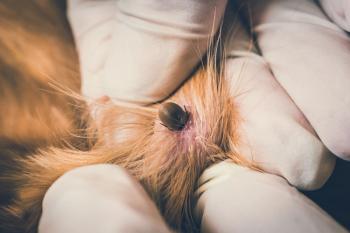
Bartonellosis basics
Veterinary team members, you're at risk for the disease simply because you work with animals. But how much do you really know about bartonellosis?
What is it?
Bartonellosis is a condition caused by infection with Bartonella bacteria. Various strains of the bacteria can cause ailments including cat-scratch disease, endocarditis, and neuroretinitis. In the past 20 years, researchers have identified 26 species of Bartonella, although not all are thought to infect people. Symptoms in people include pain and fatigue (see the symptoms below). Those with bartonellosis are often misdiagnosed as suffering from chronic Lyme disease.
How is it transmitted?
Cat scratches and bites contaminated with flea excrement or bites and accidental needle sticks contaminated with Bartonella-infected cat blood are common routes of transmission. At this time, researchers are unsure whether cat saliva is infectious. The Bartonella species that commonly infect dogs have only been reported to infect people in rare circumstances, and ticks possibly infected those individuals.
Who is at risk?
Pet owners, veterinarians, veterinary team members, and others who work with animals regularly are at the highest risk for bartonellosis infection. In fact, of the veterinary professionals whom Dr. Edward Breitschwerdt's team tested, up to 50 percent were infected with one or more Bartonella species. And while it's commonly thought that Bartonella only causes chronic bacteremia in immunocompromised people, Dr. Breitschwerdt's team has found that even healthy people can become ill.
How is it treated?
Once diagnosed, bartonellosis is typically treated with antibiotics. Ninety-five percent of patients respond to treatment, according to Bobak Robert Mozayeni, MD, a leading expert on Bartonella.
What precautions can you take?
Most people become infected with Bartonella from wounds that get contaminated with flea excrement. One of the best ways to ward off bartonellosis is to recommend that your clients-especially cat owners-use a monthly parasite prevention that protects against fleas. Take commonsense precautions, such as avoiding being bitten or scratched by patients and promptly washing any bites or scratches you receive. Also try to avoid contact with blood and other bodily fluids from cats and dogs.
10 symptoms of bartonellosis in people
1. Fever
2. Fatigue
3. Headache
4. Poor appetite
5. Unusual, streaked rash
6. Gastritis
7. Palpitations
8. Severe pain
9. Numbness
10. Acne on upper face and forehead
Sources: California Lyme Disease Association; Bobak Robert Mozayeni, MD
Newsletter
From exam room tips to practice management insights, get trusted veterinary news delivered straight to your inbox—subscribe to dvm360.




